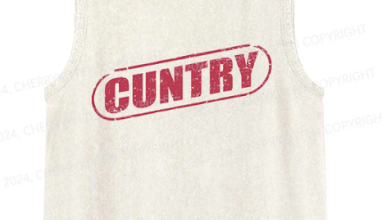Pool Safety Essentials: Tips for Keeping Kids and Pets Safe

Having a swimming pool at home can be a source of joy, relaxation, and family fun. However, it also comes with responsibilities, especially when it comes to ensuring the safety of children and pets. Accidents can happen in the blink of an eye, but with the right precautions and safety measures, you can create a secure environment around your pool. Here are essential tips to help you keep your loved ones safe while enjoying your backyard oasis. For more information check out pool company in dubai
1. Install Pool Fencing
One of the most effective ways to prevent accidents is to install a secure pool fence around your pool area. A barrier can significantly reduce the risk of unauthorized access by children or pets.
- Height and Design: Choose a fence that is at least four feet high, with vertical slats spaced no more than four inches apart to prevent climbing. Opt for a fence that does not have footholds or handholds to deter climbing attempts.
- Self-Closing and Self-Latching Gates: Ensure that the gate leading to the pool area is self-closing and self-latching, making it difficult for kids to open it without supervision. Install the latch out of reach of small children.
- Regular Maintenance: Inspect your pool fence regularly for any damage or wear and repair it promptly to maintain its effectiveness.
2. Supervise at All Times
Active supervision is crucial when kids and pets are near the pool. Always keep a close eye on them while they are swimming or playing around the pool area.
- Designate a Water Watcher: When hosting gatherings, designate a responsible adult to be the “water watcher.” This person should avoid distractions, such as phone calls or socializing, to focus solely on supervising the swimmers.
- Stay Within Arm’s Reach: For young children, it’s essential to stay within arm’s reach, even if they are wearing flotation devices. Accidents can happen quickly, so being close by is crucial for immediate assistance.
3. Use Pool Alarms and Safety Devices
Investing in pool alarms and safety devices can provide an extra layer of security for your pool area.
- Pool Alarms: Consider installing pool alarms that alert you if someone enters the water unexpectedly. These alarms can be placed on the pool gate or within the pool itself, providing peace of mind.
- Floating Alarms: Floating pool alarms detect motion in the water and emit an alert if someone enters the pool unexpectedly. These can be especially useful for homes with children or pets.
- Safety Covers: Use a safety pool cover when the pool is not in use. These covers can prevent accidental falls into the water and keep the pool clean and safe.
4. Teach Water Safety and Swimming Skills
Teaching children how to swim and promoting water safety awareness is essential for reducing the risk of accidents.
- Swimming Lessons: Enroll children in swimming lessons with a certified instructor. Learning basic swimming skills can boost their confidence and ability to stay safe in the water.
- Water Safety Rules: Educate kids about pool safety rules, such as no running around the pool, diving only in designated areas, and not pushing others into the water. Encourage them to always ask permission before going near the pool.
- Pet Training: If you have pets, consider teaching them to swim and how to exit the pool safely. Some dogs may naturally enjoy swimming, while others might need guidance.
5. Keep the Pool Area Clean and Clear
Maintaining a tidy pool area can help reduce the risk of accidents. Keeping the area clear of toys, furniture, and other obstacles ensures a safer environment.
- Remove Toys: After swimming sessions, remove floats, toys, and other items from the pool and surrounding area to prevent children from being tempted to access the water unsupervised.
- Proper Storage: Store pool chemicals and cleaning supplies in a locked cabinet out of reach of children and pets. Make sure to follow proper storage guidelines to keep them safe.
- Regular Maintenance: Regularly inspect the pool area for hazards, such as broken tiles or sharp edges. Ensure that any furniture is stable and secure, minimizing the risk of tipping or falling.
6. Implement Emergency Preparedness Plans
Being prepared for emergencies can make all the difference in a crisis. Create an emergency plan and ensure everyone in the household knows what to do in case of an accident.
- Learn CPR: Having at least one adult trained in CPR and first aid can be lifesaving. Consider taking a course to refresh your skills and knowledge.
- Keep Emergency Equipment Nearby: Equip your pool area with essential emergency equipment, such as a reaching pole, flotation devices, and a first aid kit. Ensure these items are easily accessible in case of an emergency.
- Establish an Emergency Contact List: Keep a list of emergency contacts, including local emergency services, poison control, and your pediatrician, visible near the pool area.
7. Set Pool Hours and Rules
Establishing clear rules and hours for pool use can help promote safety and create a structured environment for swimming.
- Designated Swimming Times: Set specific times for swimming to ensure that supervision is available. Limiting pool hours during late evenings or early mornings can help prevent unsupervised access.
- Enforce Pool Rules: Clearly communicate pool rules to family members and guests, and enforce them consistently. Make sure everyone understands the importance of safety around the pool.
Conclusion
Ensuring the safety of children and pets around your pool requires a combination of precautions, education, and supervision. By installing barriers, teaching swimming skills, and implementing safety measures, you can create a secure environment that allows your loved ones to enjoy the fun and relaxation that a pool provides. Remember, pool safety is an ongoing commitment, and staying vigilant can make all the difference in preventing accidents and creating lasting memories in your backyard oasis




